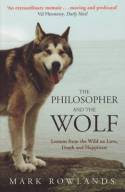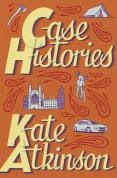 Being something of a closet geek (yes, I was the one in your class who actually liked maths), I always rather enjoy it when the newspapers run stories based on maths or statistics.
Being something of a closet geek (yes, I was the one in your class who actually liked maths), I always rather enjoy it when the newspapers run stories based on maths or statistics.Sometimes such articles are predictably backwards-facing “in my day” types, written along the lines of ‘how much easier public examinations are now than…’ - the ‘than’ in question being whenever the author happened to be at school - and are often followed by an example from a recent exam paper so that you can test yourself. I have two Pavlovian responses to these features: to try out the test in question; and to disagree wholeheartedly with the writer. In my world view, any student who sits and passes a public examination deserves praise for the achievement regardless of the decade it took place in; whether or not the article’s author is a genuine card-carrying genius or still carrying the long-cold remains of a school days chip is a moot point.
The other kind of statistical newspaper feature that piques and quivers my maths geek antennae is one that attempts to compare how we live now with previous generations. There is no doubt that this comparison is a hard one to make and not least because things fluctuate in both actual and relative cost. It is also something that we have observed it in our own lifetimes. Just as a personal for instance, I can recall as an 8 year old buying a packet of crisps for 7p at the corner shop. When I bought a pack last week to go with my lunch, it was 54p. That’s close on an 8-fold increase in price over 32 years. But in personal real terms, the 7p packet of crisps in 1977 was a much larger proportion of my weekly disposable income (pocket money of 25p) than it is now. I might moan about my pay, but it’s certainly more than £4.32. Although admittedly, it doesn’t always feel like it, but that’s a different story…
Fortunately, the Office of National Statistics takes a somewhat more scientific approach to the concept than relying on memory and the pocket money of 8 year olds to make this calculation. In the spring of every year, the ONS takes a notional ‘shopping basket’ of 650 items to represent what the average British household spends in a month, and, using some fiendishly complex weighting and calculation, comes out with figures for the level of annual inflation – the Retail Prices Index (RPI) and the Consumer Prices Index (CPI) .
What’s interesting to me about this, though, is not so much the maths (admirable though that no doubt is) but the contents of the notional basket and what it says about us. For instance, when the RPI was first measured in 1914, the basket included candles, mangles, back-lacing corsets, tram fares and shirt collars. It’s probably fair to say that most people’s monthly shopping no longer includes most of these items, and so the ONS has to attempt to maintain a kind of consistency between the shopping baskets from year to year, adding or removing items to try to keep it representative of real life.
And the list of what gets added into the basket and what gets removed each year is fascinating stuff. This year saw the addition of rosé wine, hot rotisserie chicken and internet-based DVD rental subscriptions, whilst MP3 players and rentals from real-life DVD hire shops were removed. In came Freeview boxes and MP4 players. Out went wine boxes and shag pile carpets; in came hardwood flooring, Parmesan cheese, double cream and free-range eggs. Last year, CD singles and 35mm camera film joined tram fares and shirt collars in the great historical shopping basket in the sky.
Apart from the cheese, cream and free-range eggs, I have never bought any of these items. My shopping basket regularly brims over with candles, corsets and mangles though...




Miaou! I scented you back.
ReplyDeleteSeriously, love the stats bit - lies, damned lies, statistic and medical or social research....as my doctoral thesis proved (and nearly failed as a result).
i signed up for jane's pitch party and have come over to say hi. I too am a closet geek (tending toward science and statistics) and love your post on the Price Indexes - there's definitely some research needed to speak to those shopping basket content trends. I have to ask though - what are mangles (I'm squirreling that word away to go in a book someday)?
ReplyDeletecheers (all the way from the antipodes)
Melinda
If you notice a store offering shirt collars, Katy, let me know. They seem to be becoming a thing of the past around here.
ReplyDeleteI suppose you will be busy this week, beginning a new job and having company around the house. Both are the good kind of busy, though, and I hope you will have a lot of fun.
By the way, math whiz, how much do you charge for balancing checkbooks?
Hi Katy :) I'm great at shopping but the math and statistics...Not!
ReplyDeleteHope you are having a great day and good luck with the new job...I think you posted you start on Wednesday? You're getting a nice little break and some fun in between :)
I'm a pitch party visitor too. I loved your stats. It IS fascinating, but I know truthfully, if I saw it in the paper, my eyes would glaze over.
ReplyDeleteHopeless at maths, but the retail price index sounds interesting in historical context.
ReplyDeleteI watched 'The Coalminer's Daughter' last week, and Sissy Spacek played Loretta Lyn, kicking a rainbarrel wash-tub while composing a song. A mangle was attached to the top of the tub.
Hi Katy, I've arrived here via Jane Smith's Pitch Party. I'm a well-out-of-the-closet and once-was-fully-paid-up geek. I must admit that although I'm a physicist, and therefore know a bit of maths, I have trouble with probability and statistics. I like Spike Milligan's comment: 83.1% of statistics are made up on the spot.
ReplyDeleteMeow and a big purrr back, Cat! :-) Lovely to see you, thank you for your kind words and for dropping by
ReplyDeleteHello Melinda and thank you for your kind words and for travelling all that way to say hi! Great to meet another fellow geek too :-)
ReplyDeleteA mangle is a device (two rollers turned by hand) to help get the water out of your clothes etc once you've washed them. I had a look on the interweb for a picture for you and found this at Wiki: http://en.wikipedia.org/wiki/Wringer
I think there probably are a few traditonal 'gentlemen's outfitters' where one could purchas shirt collars should one be so inclined Fram. I remember visiting one on holiday in Bridgend with my ex some years back - had everything a well-kitted chap could need, from deerstalker hats and cloth caps to shooting sticks and sock garters. Wonderful shop.
ReplyDeleteAlas, balancing my finances seems to be one skill that eludes me at the moment...
Hi Kelly - yes, new job starts on Wednesday, so am busy making hay whilst the sun shines between now and then :-) Thank you too for your good wishes, and I hope you're having a great day too
ReplyDeleteHello JJ, lovely to see you and thank you for your kind words. I know stats isn't eveybody's cup of tea... Sometimes good for insomnia though :-) Thank you for dropping by
ReplyDeleteHi Sheila. Yes, I think the historical aspect of the RPI is by far its most interesting aspect. Although I know it sounds like an oyxmoron, the ONS website has some real gems tucked away... Honest! :-)
ReplyDeleteInteresting too about the mangle in the film. My mother still actually used a mangle for a few years when I was a baby. Obviously a nosy creature since birth, I caught my finger in it - still have the scar...
I love that Spike Milligan quote Captain Black! Lovely to see you here and always good to meet another geek. Thank you for dropping by :-)
ReplyDelete